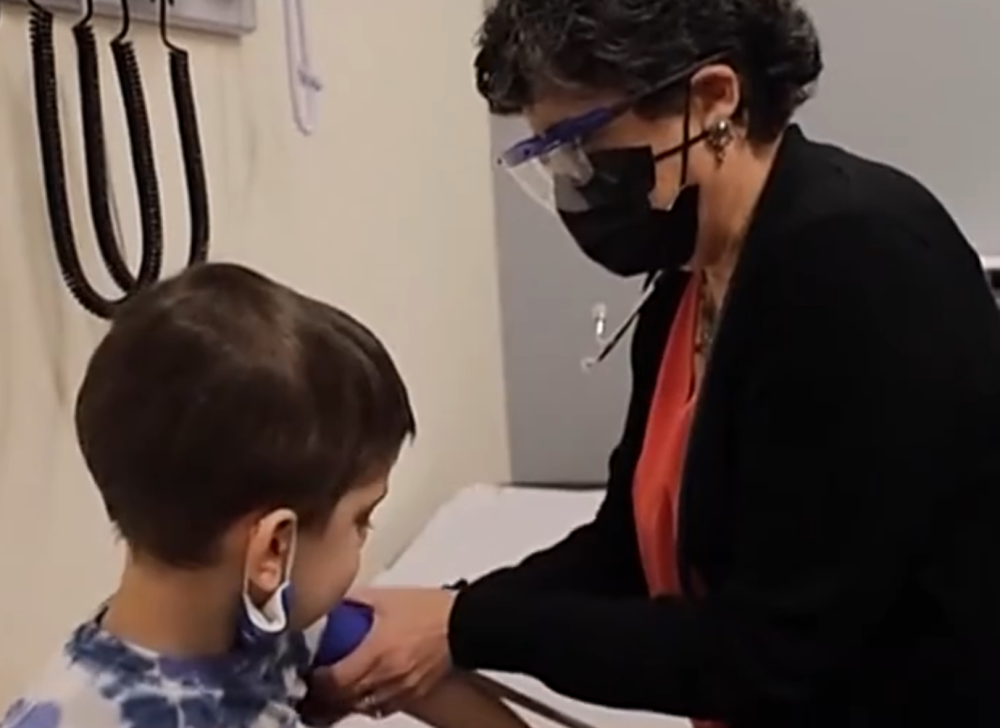Health Times reporter Qiu Yue Tan Qixin
The Ministry of Health of Indonesia reported three deaths from hepatitis of unknown etiology on 2 May, and at least four children worldwide have died of hepatitis of unknown causes to date. A Spokesman for the World Health Organization said at a press conference in Geneva on May 3 that as of May 1, at least 228 suspected cases of hepatitis of unknown cause had been reported in 20 countries, and more than 50 cases were under investigation.
In response to the previous speculation on the internet about the origin of hepatitis of unknown cause, Wang Yijin, an associate professor at the School of Medicine of Southern University of Science and Technology who has long been engaged in clinical research on hepatitis, told the Health Times reporter that the unexplained hepatitis has been ruled out from having any association with the new crown vaccination. As the cause and mode of transmission are not yet clear, people should be vigilant.

Screenshot of CCTV news video.
Any association with COVID-19 vaccination has been ruled out
According to WHO reports, children infected with unexplained acute hepatitis range in age from 1 month to 16 years of age, with adenovirus detected in at least 74 cases, novel coronavirus detected in 20 cases tested, and 19 people infected with both novel coronavirus and adenovirus.
Wang Yijin pointed out that most children hospitalized for unexplained hepatitis test positive for adenovirus type 41, but the virus is most commonly caused by respiratory disease, although cases of hepatitis have been reported in immunodeficient children infected with adenovirus, but it has not been considered the cause of hepatitis in healthy children. In addition, although some hospitalized children tested positive for COVID-19, any association with COVID-19 vaccination has been ruled out.
Most of the current cases of infection are younger than 10 years of age
According to Wang Yijin, hepatitis of unknown cause generally refers to the exclusion of liver damage caused by known infection or non-infectious factors, and at present, no common hepatitis virus A, B, C, D and E has been detected in all cases. Most of the cases of hepatitis in children of unknown origin are less than 10 years old, many are under 5 years old, and the infected children do not have other underlying diseases, and the clinical syndrome of the identified cases is severe acute hepatitis, the transaminases are significantly elevated, usually manifested as jaundice, and sometimes gastrointestinal symptoms, including nausea, vomiting, loss of appetite, and abdominal pain as the main features.
"Based on these investigations, the main hypothesis at the moment is that while adenovirus infection is mild in normal circumstances, it may be combined with other factors that can affect disease progression of adenovirus infection, triggering more severe infections or immune-mediated liver damage." These co-factors may be an entirely new source of infection, or a toxin, or some environmental factor. Wang Yijin said.
There is a risk of contagion, and human-to-human evidence is up for investigation
According to the European Centre for Disease Control and Prevention, due to the unknown pathogen and the unclear signs of human-to-human transmission, cases in the European Economic Area are in a state of "sporadic sporadic trends", so it is impossible to accurately estimate the health risk of this disease to the European child population at this stage.
Wang Yijin said that there is no clear link between the currently reported cases, the chain of evidence for human-to-human transmission is not clear, and the risk to children cannot be accurately assessed. This episode is spatially sporadic, temporally clustered, and there is a risk of contagion. However, unexplained liver damage caused by food, chemistry, drugs, toxins, immune disorders and other non-infectious factors cannot be ruled out, and further investigation is needed.
Be vigilant and pay attention to children with symptoms of acute hepatitis
Today, Indonesia, Singapore, Japan and other countries have reported cases of children with unexplained acute hepatitis.
"Since the cause and potential risk of the disease are unclear, the mainland should be vigilant." Wang suggested that clinicians pay attention to children under 16 years of age with serum transaminases greater than 500 IU per liter and exhibiting symptoms of acute hepatitis, and test these children for adenoviruses and other viruses that may cause hepatitis as early as possible. Cases of children who exclude common causes such as DPROPYL E, drugs, toxic hepatitis, autoimmune hepatitis, etc., are closely monitored and reported.
Wang Yijin pointed out that due to the unknown cause, it is impossible to determine effective control measures at this stage. Young children are more likely to be exposed to viruses such as adenovirus from the mouth of the feces. Therefore, it is recommended to strengthen general good hygiene practices in environments with young children, including paying attention to hand hygiene, cleaning and disinfecting surfaces.